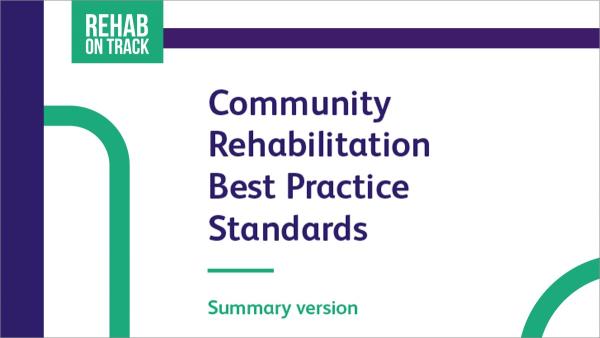The CSP recently launched the Community Rehabilitation Best Practice Standards at its Complexity Summit

The summit, which focused on the challenges the physiotherapy profession faces when treating an ageing population, saw more than 250 people come together in person and online to discuss issues including service delivery, workforce planning, and the evidence underpinning delivery of effective out-of-hospital rehabilitation to populations with multiple comorbidities.
The event also saw the launch of the Community Rehabilitation Best Practice Standards (CRBPS), which provide a multi-professional framework through which a variety of stakeholders can view how they should shape and deliver out-of-hospital rehabilitation services to their local populations against seven clear standards.
The CRBPS have been funded by the CSP Charitable Trust and produced by a panel of experts from the Community Rehabilitation Alliance. The standards are multi-professional and multi-condition, with clear measures for six different audiences, mapped across the system.
This means the standards can provide accountability and a comprehensive tool for developing rehabilitation services within an area. In this article, we look at what the CRBPS mean through the lens of the individual clinician, at all levels of practice, and how you can play a part in the leadership and development of services.
Quality improvement
Whilst these standards are new, you may already be doing a great deal towards making improvements, such as through the CSP’s Hip Fracture Standards of 2019 or Right Care initiatives. The CRBPS are a quality improvement (QI) tool to help you review your service. Understanding your current service is an essential first step in any QI project; how well do you know your local population, demand for, and capacity of, your services, and is the scope of your service clearly defined?
The standards identify seven clear recommendations which cover different aspects of what ‘good’ looks like in rehab services. You don’t have to tackle all the standards at once; you could pick one of the statements and look at improving that aspect of your service. At which point in the system can you make a change or influence? What multi-professional expertise can you draw on in your team?

Patients and clinicians
The multidisciplinary standards further define each recommendation according to different roles within your system. If you deliver direct patient care, the focus on clinician and patient will be the most important for you. As a clinician, each recommendation will guide what you can do in practice to meet the best practice standards. Some you may already be doing, while others may need changes to your practice. Don’t underestimate the impact of the small changes you can make as an individual clinician on the bigger picture.
Personalised care is fundamental to patient care and underpins rehabilitation across settings and sectors. This means the CRBPS puts the patient at the centre of rehabilitation and includes what good looks like from a patient perspective. What insight or data do you have from the patients using your service?
Change from the centre
The CSP wants to lead the rehab movement. We cannot do this without the support and buy-in from our members and key stakeholders. We know there are immense challenges, not least around workforce, and while these standards will not be implemented overnight, they are a backdrop against which we can work to combat the pressures we know are being faced across the system.
We know from our experience with Hip Sprint, that individuals and teams working in patient-facing microsystems are an enormously powerful and effective force for change, and frequently drive much larger system changes. This means we need the CRBPS to land well in practice, for if they don’t land in practice, they may not land at all.
- Rachael Wadlow and Pip White are CSP professional advisers
Professional Advice Team
The CSP’s Professional Advice Service gives advice and support to members on complex and specialist enquiries about physiotherapy practice, including professional practice issues, standards, values and behaviours, international working, service design and commissioning, and policy in practice. Find out more here.
Find Out More
Number of subscribers: 1




































